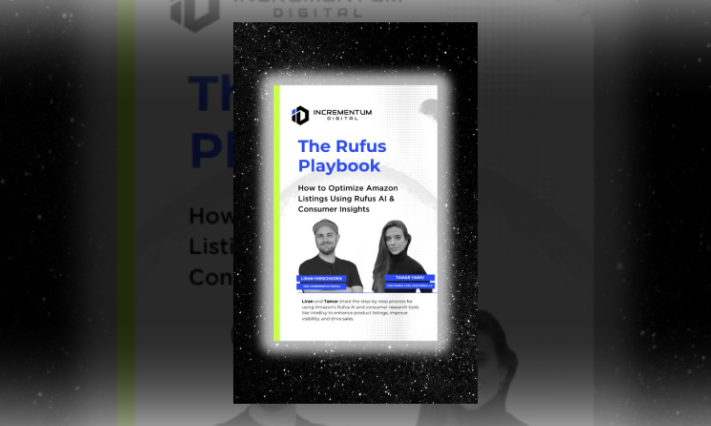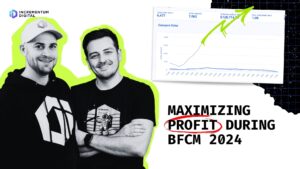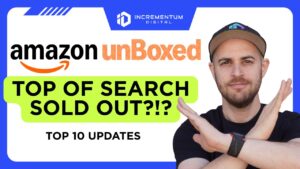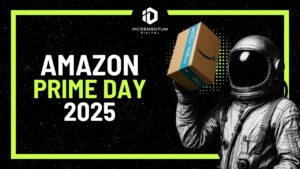Ecommerce Experts
The New Rules of BFCM 2025: How Economic Anxiety Is Reshaping Consumer Behavior
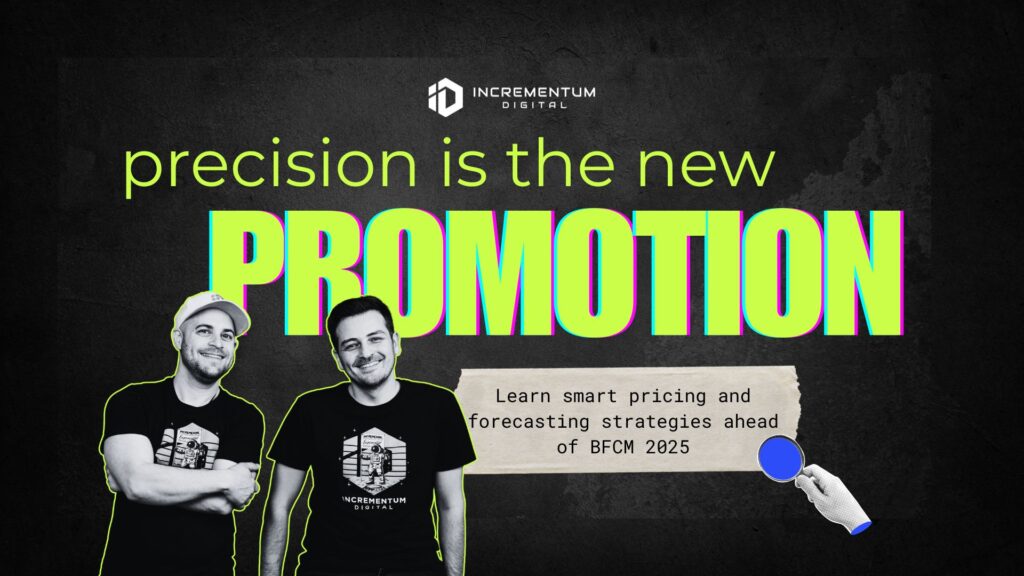
If you’re leading eCommerce or digital marketing this year, you already feel the pressure. Promotions that used to convert seem to be falling flat. Ad spend efficiency is harder to maintain. Shoppers aren’t behaving the way they did even 12 months ago. A lot has changed, and it’s accelerating. 2025 has brought a perfect storm: sticky inflation, global tariff uncertainty, and a steady drop in consumer confidence. People are still spending, but they’re more cautious, calculated, and deal-aware than ever. They’re hunting for value, not just discounts. That’s why this year’s BFCM should not be about slashing prices. Instead, teams should focus on reengineering how they deliver value profitably.
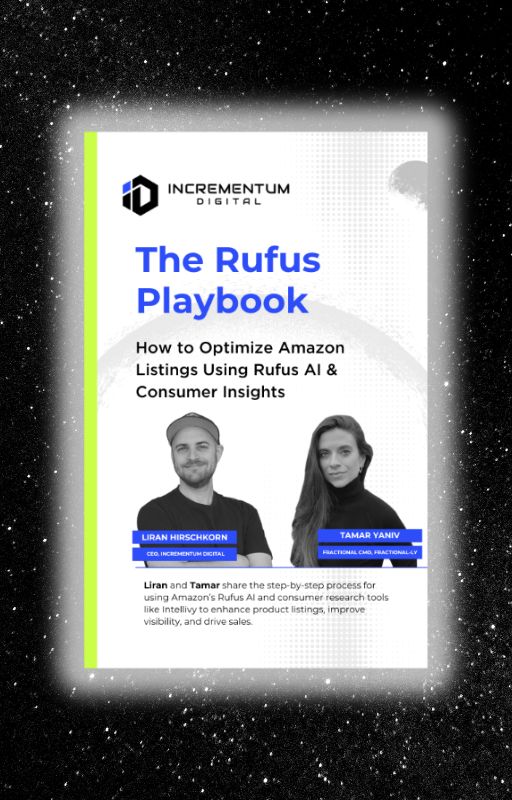
Learn How to Make Listings That Convert in 2025!
Read our step-by-step guide on how to optimize your listings using Rufus AI insights. Sign up for our newsletter and get your copy for free!
Show me howThat shift in mindset (i.e., moving away from trying to force growth in familiar channels and instead aligning with where demand is actively surging) is what will define the winners of Q4. As Incrementum Digital’s CEO and founder, Liran Hirschkorn, puts it, “Sellers launch where the demand is, not where you wish it were.” It’s not about nostalgia for last year’s channels or strategies. It’s about meeting this year’s buyer exactly where they’re already leaning in.
In this post, we’ll unpack the psychology of today’s value-driven shopper, the margin traps to avoid, and the tactical playbook brands need to execute Black Friday and Cyber Monday 2025 with precision.
The 2025 Shopper: Value-Conscious, Not Cheap
There’s a misconception in the market that consumers have become “cheap.” The truth is more nuanced: many are actually becoming value-maximizers. They’re still spending, but they’re scrutinizing every purchase through a tighter lens: Does this feel worth it? That question is driving a massive recalibration in buyer behavior across categories. This shift is not really about spending less but more about spending smarter. And for brands, that means having to earn every dollar more intentionally than ever before.
Rise of “Trade-Down” Behavior
Shoppers are trading down, but they’re not lowering their standards. They’re looking for equivalent (or near-equivalent) quality at a better price point. This trend is especially visible in essential categories like household goods, grocery, and health & beauty, where price-performance analysis is happening at scale.
Major indicators of this trend:
- Consumers are shifting from national brands to private label or DTC brands that offer comparable perceived value at a lower cost.
- Brand loyalty is weakening. McKinsey reports that more than 50% of U.S. consumers have tried a new brand in the past year, and the #1 reason is price.
- PYMNTS found that 62% of shoppers now compare prices across at least three retailers before making a purchase, with many saying they’ve “permanently changed” their buying habits due to economic uncertainty.
For brands, this means your competition isn’t just your usual category players; it’s anything that looks like a smarter buy. If you’re not clearly articulating your value proposition at every touchpoint, you’re inviting a trade-down.
Intentional Indulgence
Consumers are still spending on themselves, but they’re choosing carefully. What used to be an impulse purchase is now a considered reward, something that adds real enjoyment or emotional relief. Every indulgence needs to feel justified.
What’s Shaping “Worth It” in 2025: According to FMCG Gurus, one of the biggest consumer shifts this year is “Prioritizing Pleasure.” More than half of shoppers now treat small indulgences as self-care, using them to create moments of comfort and normalcy when finances feel tight. This is giving rise to what the firm calls permissible indulgence, a way to enjoy without guilt or excess. The pattern shows up across categories: a higher-quality coffee instead of a dinner out, a skincare splurge instead of a vacation, or premium grocery items that elevate everyday routines. These decisions are emotional but calculated.
Social validation also plays a major role. Creator content, UGC, and real product experiences shape how consumers decide what feels “worth it.” A recommendation from a trusted voice makes the purchase feel rational, not reckless, especially when it’s tied to lifestyle or wellbeing
How “Worth It” Drives Purchase Decisions: In 2025, shoppers are evaluating purchases through a sharper lens, one that blends practicality with personal meaning. Spending hasn’t stopped, but it’s become more selective. Every purchase must justify itself in usefulness, quality, or emotional payoff.
According to McKinsey’s State of the Consumer 2025, shoppers are making “unexpected trade-offs” across categories, cutting back on products that feel interchangeable while upgrading in areas that improve daily life. This is less about price sensitivity and more about prioritization — a shift toward thoughtful consumption.
The same theme appears in KPMG’s 2025 Consumer Pulse Survey, which found that nearly half of U.S. consumers plan to reduce discretionary spending this year due to inflation and tariff concerns. Yet, spending on essentials and lifestyle products that offer tangible comfort or perceived longevity remains strong. Consumers are looking for reliability and emotional reassurance, not just deals.
This behavior defines what “worth it” means now: confidence, trust, and a sense of return on investment, financial or emotional. Brands that communicate that balance clearly will capture buyers who are no longer convinced by surface-level discounts.
Why Blanket Price Discounting Strategies for BFCM 2025 are a Trap
Discounts remain one of the most effective levers for driving traffic during BFCM, but in 2025, overuse is becoming a liability. Adobe’s latest holiday forecast reports that while U.S. online holiday sales are projected to grow by 4.8%, the average discount depth across categories like electronics and apparel is shrinking compared to 2024. Retailers are realizing that deeper cuts no longer guarantee stronger conversion.
The logic is simple: when every brand is discounting, discounting loses its power. MarketWatch notes that consumers, facing tariff uncertainty and higher everyday prices, are responding less to blanket markdowns and more to targeted value. Price fatigue has set in, and endless deals have trained shoppers to delay purchases until the “real” sale begins.
That same concern is echoed in McKinsey’s 2025 holiday trends report, which warns that aggressive, undifferentiated price cuts erode margin and weaken brand equity. Retailers who emphasize strategic promotions (bundles, loyalty-driven offers, and limited-time exclusives) are outperforming those relying on mass discounts.
Harvard Business Review highlights that effective pricing during periods of inflation and tariff pressure is a test of communication and restraint. Brands that take the time to plan and explain their pricing decisions earn customer trust, even when prices rise. Those who react impulsively, chasing short-term wins, end up training customers to view their products as transactional instead of valuable.
The most successful brands use structured offers (e.g., tiered pricing, value bundles, or loyalty-based deals) to reinforce credibility and maintain perceived worth. They frame promotions as thoughtful rewards, not desperate attempts to move inventory.
Liran Hirschkorn explains the mindset clearly: “Trust is a KPI that can’t be built overnight. It takes consistency, integrity, and patience.”
Pricing works the same way. Quick wins come from slashing prices; lasting growth comes from consistency and credibility. This BFCM, the brands that win will be the ones building trust into every transaction, teaching shoppers to believe in their value, not just their discounts.
The Winning Strategy: Value Without Margin Sacrifice
BFCM 2025 isn’t about who discounts the hardest. What matters more is to position your value in the most strategic ways possible. After all, shoppers have seen every type of deal imaginable. They don’t respond to noise anymore; they respond to relevance, clarity, and confidence. For brands, the challenge is protecting profit while still giving customers a reason to buy right now.
Smart Offer Architecture
For 2025, retail success hinges less on offering steep discounts and more on building structured value systems that align with consumer expectations. Deloitte’s 2025 US Retail Industry Outlook calls this evolution a shift from “mass to micro”, a data-driven approach to personalization that helps brands serve diverse, value-seeking customers at scale.
According to the report, nearly six in ten retail executives expect consumers to prioritize price over loyalty this year, while two-thirds anticipate shoppers will make more frequent purchases with smaller basket sizes due to budget constraints. This shift underscores the importance of well-engineered offer architecture, one that drives perceived value without defaulting to across-the-board discounts.
The good-better-best model remains one of the most effective frameworks for balancing reach and profitability. Deloitte’s findings show that retailers are using tiered pricing, loyalty incentives, and co-branded programs to improve margins while maintaining consumer engagement. Nearly half of retail executives (46%) cited strengthening loyalty programs as a top growth opportunity, and four in ten plan to enhance the shopping experience with AI-driven personalization, including fit guides, interactive displays, and digital signage.
Beyond pricing, AI and machine learning are driving what Deloitte calls “intelligent interaction.” Retailers that used AI-enabled chatbots during Black Friday 2024 saw a 15% lift in conversion rates, while seven in ten executives expect to implement AI tools for personalization in 2025. This data reinforces the importance of connecting value creation with timing, context, and customer insight.
When these tools are deployed strategically, supported by data, they create momentum without compromising long-term trust or margin integrity.
Transparent, Performance-Driven Promotions
Discounts alone don’t prove success anymore; data does. Tying every promotion to a measurable behavioral outcome is crucial. Instead of chasing vanity metrics like clicks or impressions, they’re asking a more strategic question: Did this campaign actually change what customers did?
That shift from assumption to evidence is defining the new standard for retail performance. Deloitte’s 2025 US Retail Industry Outlook notes that retailers are moving aggressively toward data transparency and real-time personalization, with nearly 70% of executives planning to use AI-enabled tools to optimize demand forecasting, inventory visibility, and promotional targeting. These systems allow brands to monitor how audiences engage at every step, not just when they click, but when they hesitate, abandon, or return.
Tools like Amazon Marketing Cloud (AMC) and Customer Journey Analytics make this insight actionable. Brands can isolate high-drop-off points, test Brand Tailored Promotions (BTPs), and identify whether a discount actually drives incremental conversion or simply rewards buyers who would have purchased anyway. This approach helps marketers reframe promotions from a cost center into a diagnostic tool, one that reveals where customer intent is strong and where friction exists.
As Incrementum Digital’s Director of Advertising, Mansour Norouzi, puts it, “The data’s out there. The challenge is building the discipline (and systems) to check these constantly.”
Too many brands still measure success at the surface level: tracking ad spend, ROAS, or TACoS. But that narrow view hides what’s really driving (or limiting) growth. The brands that scale fastest ask tougher, ongoing questions:
- What’s our Customer Acquisition Cost (CAC) — overall and by channel?
- How long does it take visitors from ad channels to convert into buyers?
- Which campaigns attract qualified traffic, not just clicks?
- What’s our Marketing Efficiency Ratio (MER) over time, and how does it shift by quarter?
- How is Lifetime Value (LTV) evolving by channel, cohort, or even by offer?
- How many touchpoints does it take for a new customer to actually purchase?
This level of analysis turns advertising from a guessing game into a performance system. When those metrics are reviewed consistently, brands can identify which promotions truly influence buyer behavior and which simply burn budget. It’s the difference between optimizing for spend efficiency and optimizing for growth efficiency.
Overall, this mindset turns transparency into leverage. When brands measure behavior instead of spend, they stop discounting blindly and start optimizing with purpose, building campaigns that improve both performance and profitability.
New Frontiers in Discovery: AI, TikTok, and Beyond
Product discovery isn’t happening where it used to. The digital shelf has expanded, and Amazon is no longer the starting point for every shopping journey. In 2025, AI-driven assistants, creator platforms, and shoppable ecosystems are redefining how and where consumers decide what to buy.
The biggest disruptor in this space is AI-enabled discovery. OpenAI’s integration of ChatGPT with native Shopify and Etsy checkout has effectively merged product research with direct purchase, turning conversational search into commerce. Shoppers can now ask, compare, and buy without ever visiting a retailer’s site. Amazon, notably, isn’t part of that network (at least not yet), creating a rare opening for competitors to influence consumers before they reach the marketplace.
At the same time, social-first platforms like TikTok Shop are pushing product inspiration to the very top of the funnel. According to Deloitte’s 2025 US Retail Industry Outlook, 62% of Gen Z consumers in the United States use TikTok daily, fueling a 156% year-over-year surge in TikTok Shop transactions during the 2024 holiday season. Eight in ten retail executives surveyed by Deloitte expect social commerce to increase further in 2025, and not just through influencers, but via new shoppable media integrations that blend content, entertainment, and purchase paths in one feed.
Liran Hirschkorn frames this evolution succinctly: “Amazon doesn’t own discovery anymore. ChatGPT and TikTok Shop are creating demand upstream, and brands that show up there will see a halo effect across every channel.”
That halo is measurable. Brands that invest in discovery-driven content (e.g., creator collaborations, AI-informed search optimization, and shoppable storytelling) are already seeing stronger cross-channel conversion rates. When awareness starts on platforms built for engagement, every downstream marketplace (Amazon, Walmart, DTC) benefits.
Discovery is no longer a step in the funnel; it’s a full-fledged acquisition channel. And for 2025, that means brands can’t just optimize for visibility; they need to design for serendipity.
Forecasting Matters More Than Ever for BFCM 2025
Forecasting has become the difference between brands that react to BFCM and those that control it. The key is to enter Q4 2025 with a clear, data-backed forecast — connected to inventory, ad spend, and category-level demand. This would enable brands to scale sustainably without overspending or running dry on stock.
According to Deloitte’s 2025 US Retail Industry Outlook, retail executives are treating forecasting as a competitive advantage, not a back-office process. Nearly 70% are investing in AI and machine learning tools to improve demand visibility, inventory accuracy, and pricing agility. These systems allow brands to anticipate surges in category demand before they happen, preventing stockouts and overspend while optimizing capital allocation across channels.
The logic is simple: forecasting isn’t about predicting the future; it’s about preparing for multiple futures. McKinsey’s 2025 State of the Consumer report reinforces this, noting that today’s shoppers are making “unexpected trade-offs across categories,” splurging in one and cutting back in another. This pattern makes linear projections obsolete. Instead, brands need adaptive models that adjust in real time, linking ad spend, marketplace performance, and supply chain data into one feedback loop.
As Mansour Norouzi highlights, “Every brand needs forecasting. Without it, you’re just reacting instead of leading. Without a clear direction, you’re just reacting to yesterday’s numbers.” Forecasting is how strategy becomes measurable. It turns ambition into math.
Mansour breaks forecasting into two layers:
- Understanding the market baseline. This means studying how your category behaves — not just through intuition, but through tools like Amazon Category Insights, Opportunity Explorer, and your own historical data. The goal is to see the natural rhythm of demand: seasonal spikes, category declines, and long-term velocity shifts. Using even basic models (he mentions Prophet or Excel’s forecasting tools) helps establish a grounded baseline. It answers the question: If we just keep doing what we’re doing, where do we land?
- Defining growth beyond the market. Once the baseline is clear, forecasting becomes a gap analysis. If the market suggests you’ll reach $10M in 2026 but your brand goal is $12M, that extra $2M doesn’t just “happen.” It has to come from planned, measurable acceleration — usually through advertising. From there, you work backward:
- How many additional sales are needed monthly to close the gap?
- What ACOS or MER assumptions make that achievable?
- How much incremental ad spend and inventory coverage will it take?
This is where forecasting stops being a finance tool and becomes a growth operating system. It forces alignment between marketing ambition and operational capacity — tying spend, performance, and fulfillment into a single model.
Mansour’s approach makes one thing clear: forecasting isn’t about predicting the future, it’s about defining the path to it. Brands that build this habit stop reacting to yesterday’s numbers and start leading with clarity. They understand direction, accountability, efficiency, and growth, the four levers he lists as the foundation of disciplined planning.
That discipline will separate the brands that navigate BFCM from the ones that get caught in it. Those who forecast backward from revenue targets, identifying gaps early, assigning ownership, and validating every assumption, will enter the season not just prepared, but in control.
Interested in our BFCM insights from 2024? Read all about it here.
The Future of Profit Planning: Subscribe for Early Access
BFCM 2025 is reshaping what it means to compete. Not on price, but on precision. The brands that win will be the ones using data, not discounts, to drive demand.
At Incrementum Digital, we’re building tools to help you do exactly that. Our upcoming custom GPT is designed to help eCommerce leaders forecast, price, and promote profitably, without relying on constant markdowns.
If you want first access when it launches, subscribe to our weekly newsletter below using your business email. You’ll get:
- Early access to the GPT before public release
- Exclusive strategy breakdowns from our leadership team
- Data-backed insights on how to protect margin and scale smarter this Q4
Because the next era of growth belongs to brands that plan, not panic.
Subscribe to Prime Times now and get early access to Incrementum’s Value Architect GPT.
LET’S DISCOVER WHAT’S POSSIBLE FOR YOUR BRAND
We’re here to listen and uncover opportunities tailored to your unique goals.
Fill out the form to get started, and you’ll walk away with real insights and actionable recommendations—whether we work together or not.
- HANDS-ON LEADERSHIP
- AWARD-WINNING PARTNERSHIPS
- CUSTOM-BUILT SOLUTIONS
